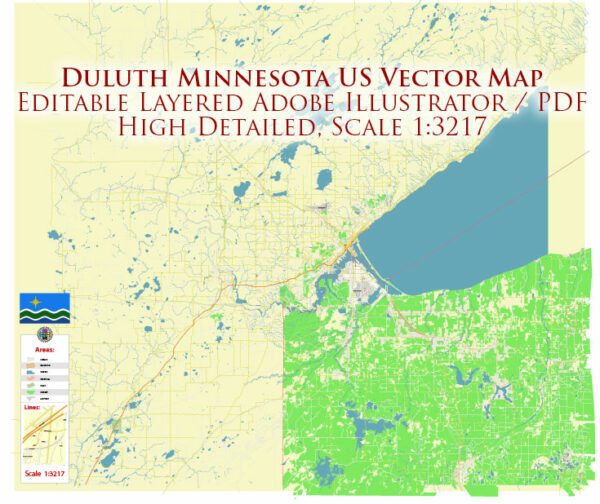Duluth, Minnesota, has a rich and diverse history that dates back to the indigenous peoples who first inhabited the region. Here is a brief overview of its historical development:
- Indigenous Inhabitants: Before European settlement, the Duluth area was home to Native American tribes, primarily the Ojibwe (Chippewa) and Dakota Sioux. These indigenous people engaged in fishing, hunting, and trade along the shores of Lake Superior.
- Early European Exploration: The first European to explore the area was French explorer Daniel Greysolon, Sieur du Lhut, in the late 17th century. Duluth was named after him. Early French and British fur traders established trading posts in the region.
- American Settlement: In the early 19th century, the United States acquired the region from the British after the War of 1812. American settlement gradually began, with an influx of pioneers and immigrants attracted by the area’s timber and mining resources.
- Industrialization: Duluth’s growth was significantly boosted by the arrival of the railroad in the late 19th century. The city became a key transportation hub for iron ore, timber, and grain shipments on the Great Lakes, fostering industrialization and economic prosperity.
- Iron Ore and the Great Lakes Shipping: Duluth became a vital center for the iron ore industry, with ore mined from the nearby Mesabi Range being shipped from the city’s ports to steel mills in the Midwest and beyond. This trade led to the development of the city’s port facilities and made it a crucial link in the Great Lakes shipping network.
- Labor History: Duluth has a history of labor activism, with strikes and labor disputes occurring in various industries, including mining and shipping. The 1916 labor strike is one notable example, which resulted in violence and marked a turning point in labor relations.
- Cultural Heritage: Over the years, Duluth has developed a rich cultural heritage, with a focus on the arts and outdoor activities. The city is known for its vibrant music scene, and it has been the birthplace of many well-known musicians. Additionally, the city’s natural beauty and outdoor recreational opportunities make it a popular destination for outdoor enthusiasts.
- Modern Era: Today, Duluth is a thriving city known for its scenic beauty, cultural attractions, and outdoor recreation opportunities. It continues to be an important center for shipping and commerce on Lake Superior and is a popular destination for tourists who come to explore its natural beauty and history.
Duluth’s history is a blend of Native American heritage, early European exploration, industrial development, and a rich cultural scene. It remains an integral part of the history of the American Midwest and the Great Lakes region.


 Author: Kirill Shrayber, Ph.D.
Author: Kirill Shrayber, Ph.D.